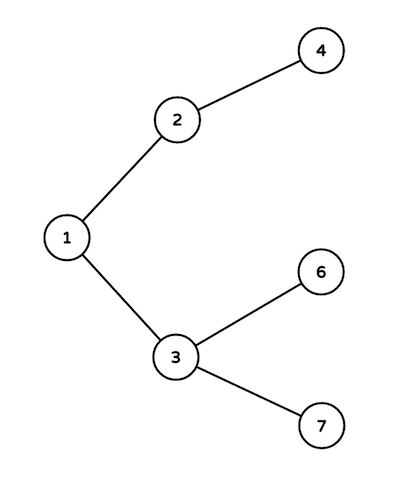codeforces362(div2)ABC
来源:互联网 发布:sql 维护计划 编辑:程序博客网 时间:2024/04/28 19:13
Ted has a pineapple. This pineapple is able to bark like a bulldog! At time t (in seconds) it barks for the first time. Then every sseconds after it, it barks twice with 1 second interval. Thus it barks at times t, t + s, t + s + 1, t + 2s, t + 2s + 1, etc.

Barney woke up in the morning and wants to eat the pineapple, but he can't eat it when it's barking. Barney plans to eat it at time x (in seconds), so he asked you to tell him if it's gonna bark at that time.
The first and only line of input contains three integers t, s and x (0 ≤ t, x ≤ 109, 2 ≤ s ≤ 109) — the time the pineapple barks for the first time, the pineapple barking interval, and the time Barney wants to eat the pineapple respectively.
Print a single "YES" (without quotes) if the pineapple will bark at time x or a single "NO" (without quotes) otherwise in the only line of output.
3 10 4
NO
3 10 3
YES
3 8 51
YES
3 8 52
YES
In the first and the second sample cases pineapple will bark at moments 3, 13, 14, ..., so it won't bark at the moment 4 and will bark at the moment 3.
In the third and fourth sample cases pineapple will bark at moments 3, 11, 12, 19, 20, 27, 28, 35, 36, 43, 44, 51, 52, 59, ..., so it will bark at both moments 51 and 52.
#include<iostream>#include<cstdio>#include<cstdlib>#include<cstring>#include<algorithm>#include<cmath>#include<queue>#include<list>#include<stack>#include<vector>using namespace std;const int maxn=10010;int num[maxn];int main(){ int t,s,x; scanf("%d%d%d",&t,&s,&x); if(x==t)printf("YES\n"); else if(x-t<s){ printf("NO\n"); } else { if((x-t)%s==1||(x-t)%s==0){ printf("YES\n"); } else { printf("NO\n"); } } return 0;}Barney is standing in a bar and starring at a pretty girl. He wants to shoot her with his heart arrow but he needs to know the distance between him and the girl to make his shot accurate.

Barney asked the bar tender Carl about this distance value, but Carl was so busy talking to the customers so he wrote the distance value (it's a real number) on a napkin. The problem is that he wrote it in scientific notation. The scientific notation of some real numberx is the notation of form AeB, where A is a real number and B is an integer and x = A × 10B is true. In our case A is between 0 and 9and B is non-negative.
Barney doesn't know anything about scientific notation (as well as anything scientific at all). So he asked you to tell him the distance value in usual decimal representation with minimal number of digits after the decimal point (and no decimal point if it is an integer). See the output format for better understanding.
The first and only line of input contains a single string of form a.deb where a, d and b are integers and e is usual character 'e' (0 ≤ a ≤ 9, 0 ≤ d < 10100, 0 ≤ b ≤ 100) — the scientific notation of the desired distance value.
a and b contain no leading zeros and d contains no trailing zeros (but may be equal to 0). Also, b can not be non-zero if a is zero.
Print the only real number x (the desired distance value) in the only line in its decimal notation.
Thus if x is an integer, print it's integer value without decimal part and decimal point and without leading zeroes.
Otherwise print x in a form of p.q such that p is an integer that have no leading zeroes (but may be equal to zero), and q is an integer that have no trailing zeroes (and may not be equal to zero).
8.549e2
854.9
8.549e3
8549
0.33e0
0.33
#include<iostream>#include<cstdio>#include<cstdlib>#include<cstring>#include<algorithm>#include<cmath>#include<queue>#include<list>#include<stack>#include<vector>using namespace std;const int maxn=10010;int num[maxn];char a[maxn];char b[maxn];char str[maxn];char ans[maxn];int main(){ int num=0,dot; bool sign=false; scanf("%s",str); for(int i=0;str[i];++i){ if(str[i]=='e'){ sign=true;a[i]=0;continue; } if(sign) num=num*10+(str[i]-'0'); else a[i]=str[i]; if(str[i]=='.')dot=i; }sign=false; bool flag=false; int len=strlen(a); int dot1=dot+num,ans_len=0; for(int i=0;i<len||i<=dot1;++i){ if(a[i]>='1'&&a[i]<='9')sign=true; if(i>=len)ans[ans_len++]='0'; else if(a[i]!='.'){ ans[ans_len++]=a[i]; } if(i==dot1&&i<len-1){ ans[ans_len++]='.';flag=true; } } if(flag){ for(int i=ans_len-1;i>=0;--i){ if(ans[i]=='0'||ans[i]=='.')ans_len--; else break; } } if(!sign){ printf("0\n"); return 0; }sign=false; for(int i=0;i<ans_len;++i){ if(ans[i]=='0'&&ans[i+1]=='.'||ans[i]!='0')sign=true; if(sign){ printf("%c",ans[i]); } } printf("\n"); return 0;}Barney lives in NYC. NYC has infinite number of intersections numbered with positive integers starting from 1. There exists a bidirectional road between intersections i and 2i and another road between i and 2i + 1 for every positive integer i. You can clearly see that there exists a unique shortest path between any two intersections.

Initially anyone can pass any road for free. But since SlapsGiving is ahead of us, there will q consecutive events happen soon. There are two types of events:
1. Government makes a new rule. A rule can be denoted by integers v, u and w. As the result of this action, the passing fee of all roads on the shortest path from u to v increases by w dollars.
2. Barney starts moving from some intersection v and goes to intersection u where there's a girl he wants to cuddle (using his fake name Lorenzo Von Matterhorn). He always uses the shortest path (visiting minimum number of intersections or roads) between two intersections.
Government needs your calculations. For each time Barney goes to cuddle a girl, you need to tell the government how much money he should pay (sum of passing fee of all roads he passes).
The first line of input contains a single integer q (1 ≤ q ≤ 1 000).
The next q lines contain the information about the events in chronological order. Each event is described in form 1 v u w if it's an event when government makes a new rule about increasing the passing fee of all roads on the shortest path from u to v by w dollars, or in form 2 v u if it's an event when Barnie goes to cuddle from the intersection v to the intersection u.
1 ≤ v, u ≤ 1018, v ≠ u, 1 ≤ w ≤ 109 states for every description line.
For each event of second type print the sum of passing fee of all roads Barney passes in this event, in one line. Print the answers in chronological order of corresponding events.
71 3 4 301 4 1 21 3 6 82 4 31 6 1 402 3 72 2 4
94032
In the example testcase:
Here are the intersections used:

- Intersections on the path are 3, 1, 2 and 4.
- Intersections on the path are 4, 2 and 1.
- Intersections on the path are only 3 and 6.
- Intersections on the path are 4, 2, 1 and 3. Passing fee of roads on the path are 32, 32 and 30 in order. So answer equals to32 + 32 + 30 = 94.
- Intersections on the path are 6, 3 and 1.
- Intersections on the path are 3 and 7. Passing fee of the road between them is 0.
- Intersections on the path are 2 and 4. Passing fee of the road between them is 32 (increased by 30 in the first event and by 2 in the second).
题意:给出一个二叉树,每次给出一条路径将这条路径上的节点加上一个数另一个操作询问一条路径上的值的累加和。
#include<iostream>#include<cstdio>#include<cstdlib>#include<cstring>#include<algorithm>#include<cmath>#include<queue>#include<list>#include<map>#include<vector>#include<stack>using namespace std;const int maxn=10010;typedef long long LL;map<LL,LL>M;int main(){ int q;cin>>q; while(q--){ LL oper,u,v,w; scanf("%lld",&oper); if(oper==1){ scanf("%lld%lld%lld",&u,&v,&w); while(u!=v){ if(u>v){ M[u]+=w;u/=2; } else { M[v]+=w;v/=2; } } } else { scanf("%lld%lld",&u,&v); long long ans=0; while(u!=v){ if(u>v){ ans+=M[u];u/=2; } else { ans+=M[v];v/=2; } } printf("%lld\n",ans); } } return 0;}- codeforces362(div2)ABC
- codeforces #235 div2 abc
- Codeforces #282 div2 ABC
- codeforces #371div2 (ABC)
- cf div2 #444 (ABC)(D已补)
- cf div2 #453 ABC(D)
- Codeforces Round356 div2 680AB 679ABC
- TopCoder SRM 648 Div2 Problem 1000 - ABC (DP)
- Codeforces AIM-TECH round div2 624AB 623ABC
- abc
- abc
- abc
- abc
- abc
- abc
- abc
- abc
- abc
- poj1222 EXTENDED LIGHTS OUT 【高斯消元】
- maven 手动把本地jar安装到本地仓库
- 一致性哈希算法及其在分布式系统中的应用
- vs2013快捷键
- 235. Lowest Common Ancestor of a Binary Search Tree
- codeforces362(div2)ABC
- 92.You executed the following commands in an RMAN session for your database instance that has failur
- Android集成友盟推送
- 6个处理数据不均衡的策略
- MBR&/BOOT和GRUB三者关系总结
- 字典树介绍
- HDU Problem 1312 Red and Black 【DFS】
- hdu 5735
- 关于solr 5.5 windows script 下无法使用post工具的解决办法


